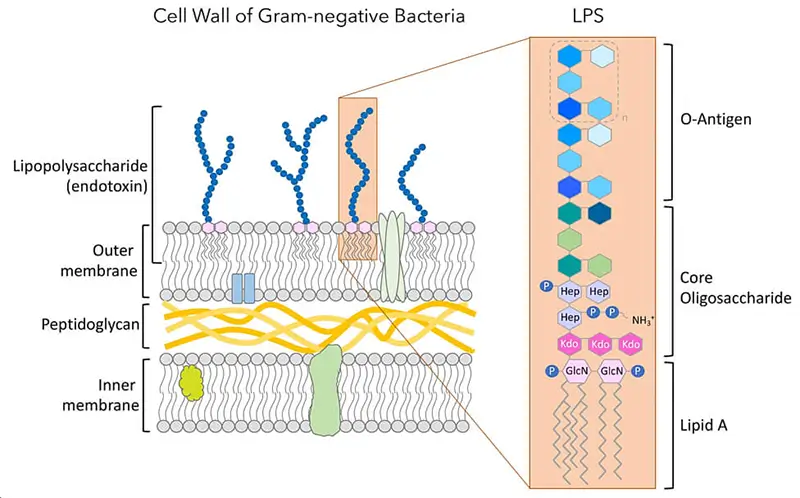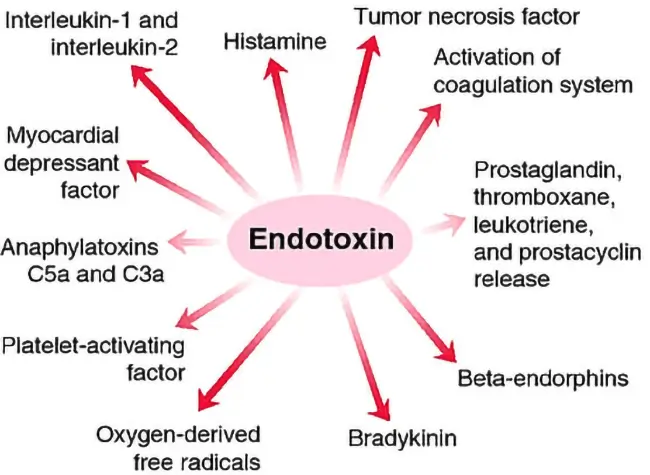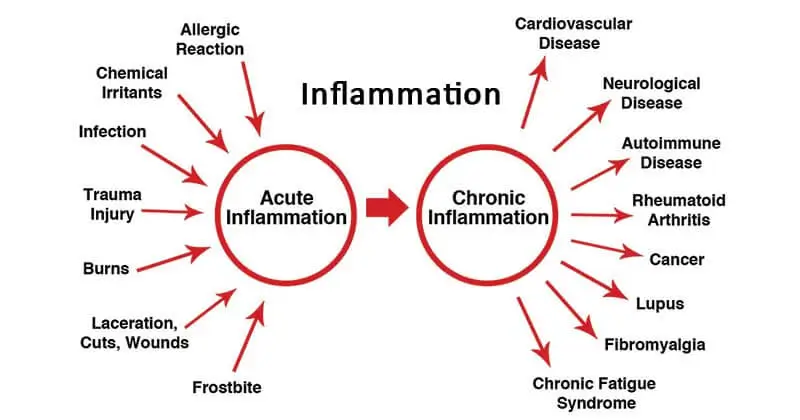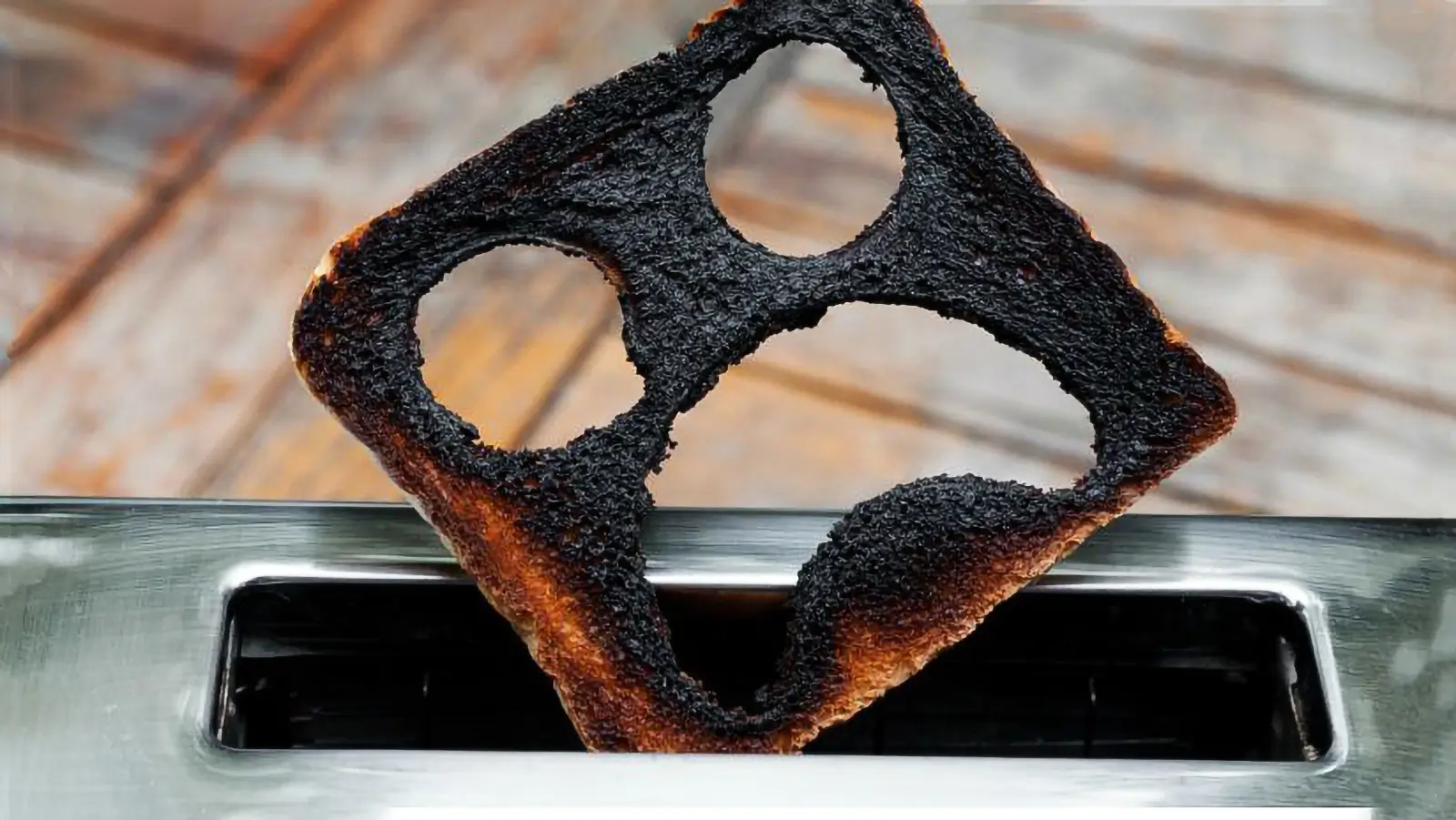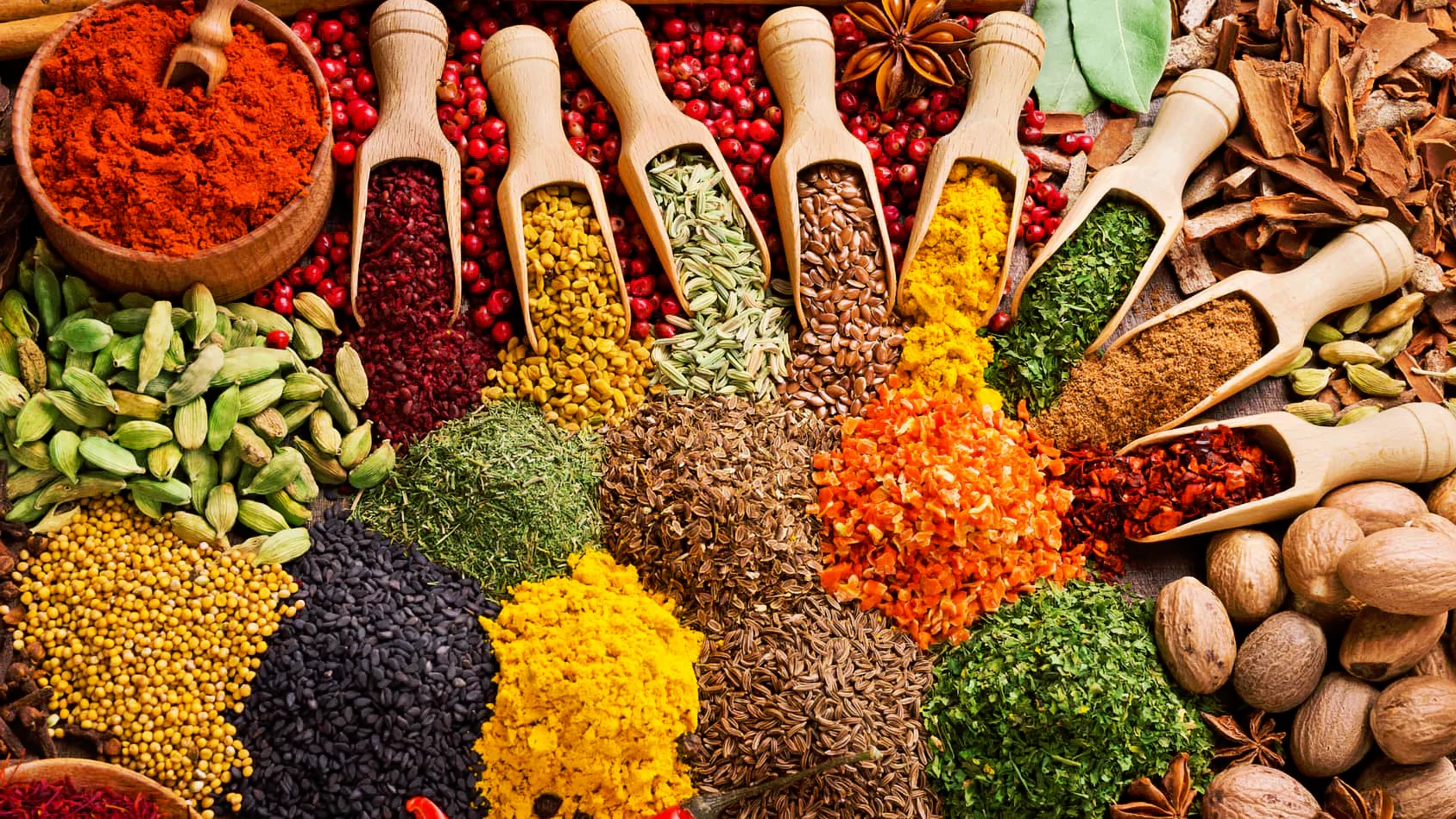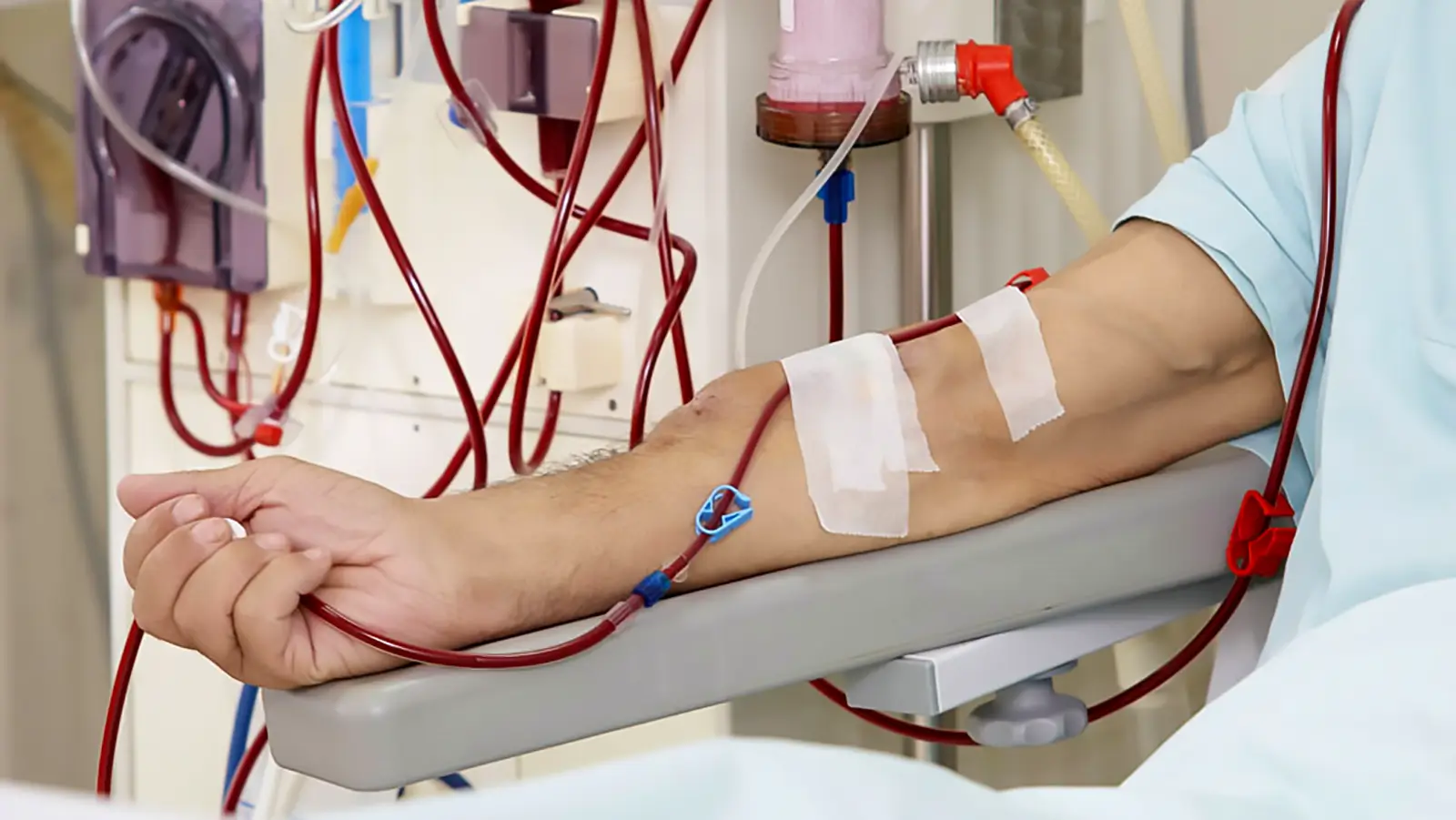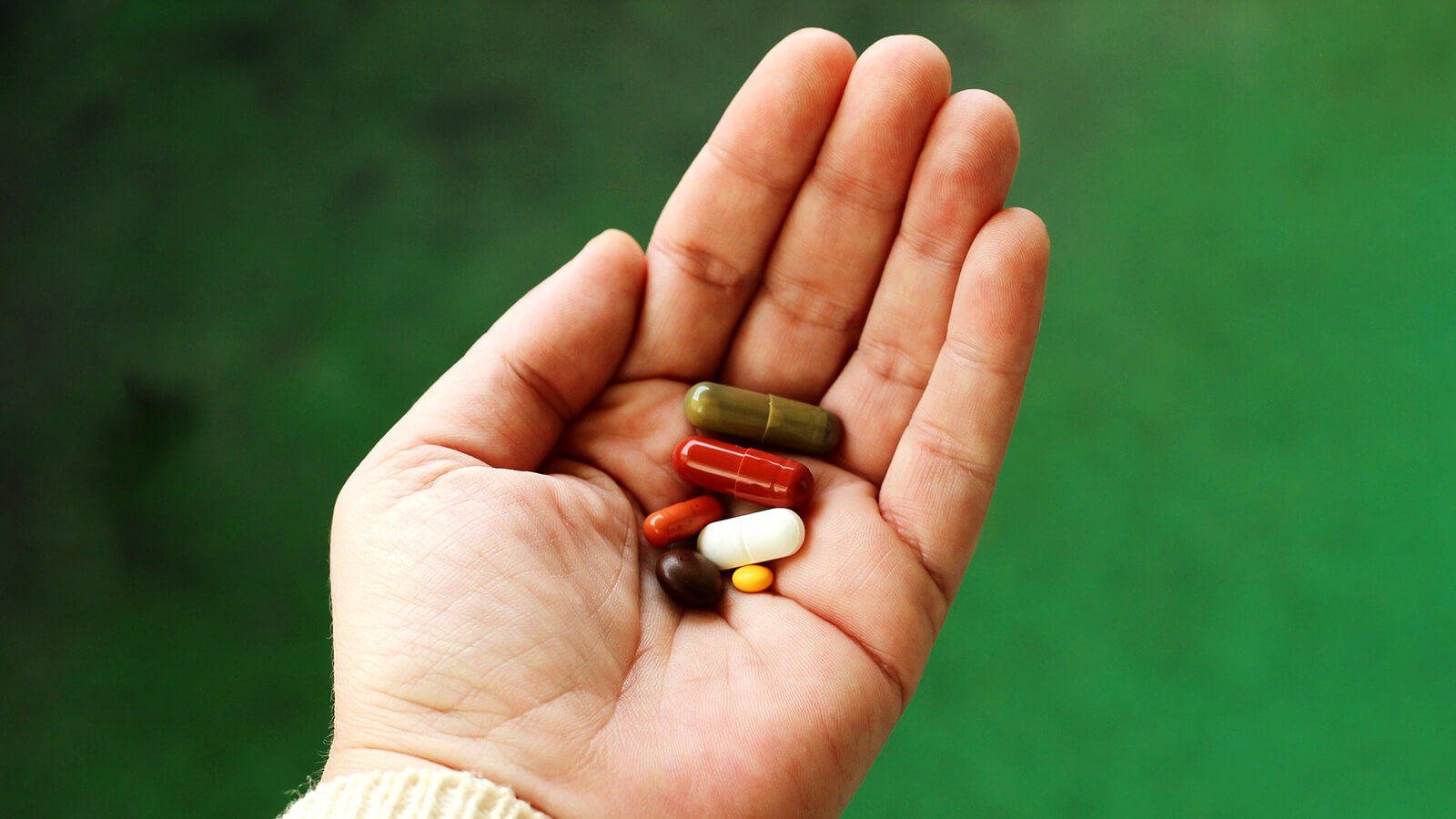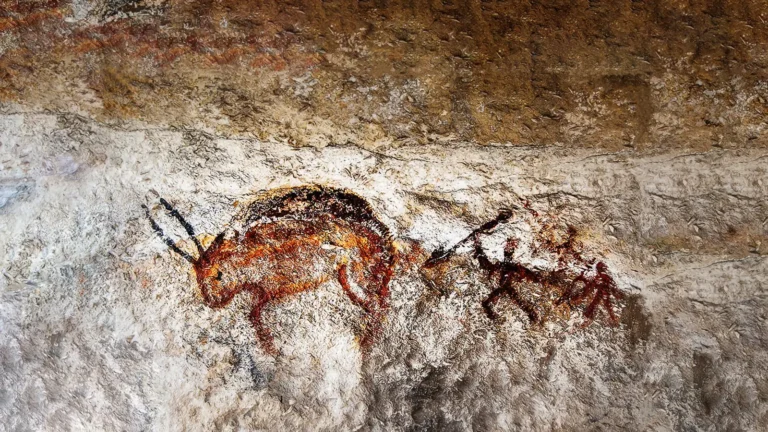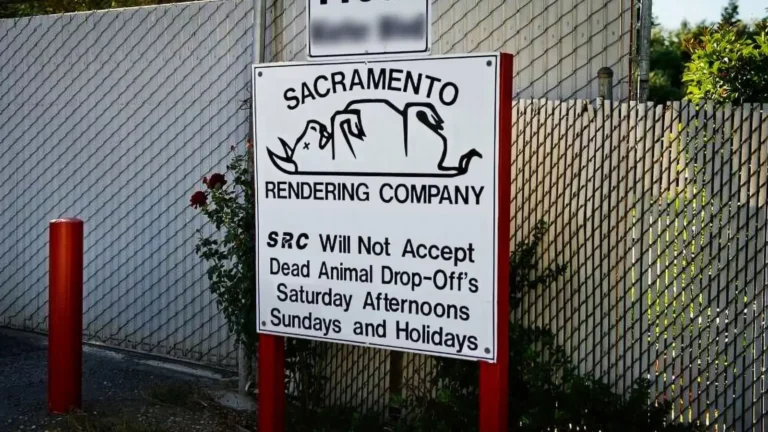Cooked meat bacteria endotoxemia- Inflammation and diet
Are humans omnivores in a true anatomical sense? There is a fundamental difference in the way the digestive tract works in plant vs meat-eating species.
Milos Pokimica
Written By: Milos Pokimica
Medically Reviewed by: Dr. Xiùying Wáng, M.D.
Updated June 9, 2023The emerging role of chronic inflammation in modern society’s major chronic diseases has sparked research into the impact of nutrition and dietary patterns on inflammatory status. The majority of human studies have linked dietary intake to systemic inflammation markers such as high-sensitivity C-reactive protein (HS-CRP), interleukin-6 (IL-6), and tumor necrosis factor-alpha (TNF-).
Significant dietary influences have been established for glycemic index (GI) and load (GL), fiber, fatty acid composition, magnesium, carotenoids, and flavonoids. Whole food plant-based diet or even a traditional Mediterranean dietary pattern, which typically has a high ratio of monounsaturated (MUFA) to saturated (SFA) fats and ω-3 to ω-6 polyunsaturated fatty acid (PUFAs) and supplies an abundance of fruits, vegetables, legumes, and grains, has shown anti-inflammatory effects when compared with typical North American and Northern European dietary patterns in most observational and interventional studies. There is a wide range of factors that influence inflammation caused by diet but a whole food antioxidant-rich, nutrient-rich diet may become the diet of choice for diminishing chronic inflammation in clinical practice.
Prolonged low-grade inflammation is linked to increased oxidative stress and altered glucose and lipid metabolism in fat (adipose) cells, muscle, and the liver. As a result, research indicates that certain dietary components can influence these key inflammatory pathways.
One of the factors that creates inflammation spikes after animal product consumption is a process known as endotoxemia. `Diet-induced metabolic endotoxemia has been proposed as a major root cause of inflammation, and these pathways appear to be detrimental to healthy aging.
We as humans, unlike carnivores species, have very low resistance filters meaning any live bacteria we eat will be creating inflammation, and diet can kill us if bacteria is dangerous. We cannot eat uncooked meat. Carnivorous animals have extremely corrosive bile acids that are able to kill any living microorganism and their digestive system is practically sterile. We as any other plant eater have mild bile acid and low resistance filters and have to cook meat and any other food item that has the potential to spread an infectious disease. For example, pasteurization is mandatory.
What people don’t understand is that even if we do cook meat we do not magically dematerialize all of the bacteria that were present in there. We only kill them by heat but they are still in there. Microorganisms are still in the meat just dead. They will not pose any risk of infection anymore.
But that does not mean that they don’t pose a risk anymore.
Even dead non-probiotic bacteria do count as toxins.
Some of the world’s most toxic substances are these dead meat bacteria endotoxins.
These substances known as endotoxins (Greek éndon within; cognate with Old Irish ind-) are thermally (250C) and chemically stable and extremely toxic. Endotoxin is a complex lipopolysaccharide (LPS) found in the outer cell membrane of gram-negative bacteria (E.coli, Salmonella typhi, Shigella).
Bacteria shed endotoxins in large amounts upon cell death creating an endotoxemia state in the body. Meaning, the bacteria can be dead or cooked for a long time, but their endotoxins are still there. Endotoxins are chemically very stable and can withstand our body’s best attempts at acid and enzyme degradation. One of the leading causes of hundreds of studies that display enlarged inflammation from animal foods, but not from most plant foods, maybe is a consequence of a toxic load of dead bacteria endotoxins in animal products. These bacteria shed endotoxins after death and then when we eat them they are absorbed into our system, leading to the endotoxemia inflammation we see after egg, meat, and dairy consumption, as well.
This would cause damage to our internal organs and the entire body and will increase the chances of chronic diseases (Ghosh et al., 1993).
If we already have an autoimmune disease such as atherosclerosis, for example, this will just agitate our immune system even worse and would create even more of an immune response (Stoll et al., 2004).
Here is one study that discovered a link between endotoxin exposure and diabetes type 2 (Harte et al., 2012).
What a low level of chronic endotoxemia inflammation does is that it causes damage like any other inflammation just in a prolonged period. What that translates to is faster and more noticeable DNA damage, a higher mortality rate from chronic diseases, and decreased longevity.
In contrast, plant foods do not show this trait, and actual consumption is correlated with the anti-inflammatory reaction after a meal because of the antioxidants and other anti-inflammatory phytochemicals. It would be interesting to see how much inflammation meat consumption causes in carnivorous species. So far I was unable to find research that looks into dead meat bacteria endotoxemia exposure in carnivorous species. This could be potentially interesting because if meat causes no inflammation in carnivorous animals, we might look at a way how to lower the same inflammation in our own bodies.
Consumption of meat, therefore, is associated with an increase in inflammation even if we disregard the risk of live infectious bacteria. This mechanism is natural and normal, and all of the carnivorous species had it to some extent but are more adept at coping with it.
A fresh hamburger contains approximately a hundred million bacteria per quarter pounder. Eating meals high in bacterial endotoxins could develop mild but systemic inflammatory episodes that predispose subjects to the development of chronic diseases.
The animal fat that comes in the same package may play a role in the pathogenesis of this after-meal inflammation. Endotoxins hold a powerful attraction for saturated fat, so they stick to it and then get absorbed through the gut wall and into the bloodstream (Erridge, 2011).
Would this happen if we eat food that is high in saturated fat from plant origin? It would, but the difference is that there are no high levels of these toxins in plant-based foods. For example, cocoa has a high fat content. It is one of the plants that has energy stored in a form of saturated fat, the same fat that is found in the animal kingdom. But cocoa also has a large number of antioxidants and in studies always decreases the level of C-reactive protein in subjects (a marker for inflammation) (Erridge et al., 2007), (Herieka et al., 2014).
The high antioxidant content of cocoa prevails and is able to neutralize the pro-inflammatory effects of endotoxins that are not present in the plants in high numbers, to begin with (Gu et al., 2014).
The problem with meat is a high concentration of bacteria. This means that eating a standard Western diet rich in animal protein and refined sugar and fat will require a much higher level of antioxidants to negate the bad pro-inflammatory effects.
The question will be where can we use these findings and can we diminish the bed proinflammatory effects of high animal protein meals with antioxidant-rich food. In other words, can we still eat meat but also add some high-antioxidant vegetables or fruits to the same meal to avoid the risk (Burton-Freeman, 2010).
There was a large number of studies done on a topic and the conclusion is yes, we can, but only to some extent. Avoidance of toxin exposure is our primary goal. If you really have to eat animal products then at least incorporate an adequate amount of anti-inflammatory food sources and calculate your optimal ORAC (Oxygen radical absorbance capacity) intake. You can find ORAC values here (ORAC Values). This would not completely negate the toxicity of dead meat bacteria endotoxemia exposure. These toxins are very potent and hard to detoxify. There are genetically susceptible individuals that have a harder time detoxifying these compounds. Antioxidant-rich food will lower the risk to a relevant degree and my advice is to optimize the antioxidant intake.
The best course of action would be to have a whole food plant-based diet that has an optimal level of ORAC units and a wide range of proinflammatory food sources with an adequate level of all essential micronutrients.
This is what the British Journal of Nutrition has to say about it.
“Postprandial (fed) state is a pro-oxidant state. The postprandial period is a time of active oxidative metabolism and formation of ROS (free radicals). There is increasing evidence that the postprandial state is an important contributing factor to chronic disease. Two main questions are posed: first, what is the role of plant foods, specifically fruits rich in complex and simple phenolic compounds in postprandial metabolic management; and second, does the evidence support consuming these fruits with meals as a practical strategy to preserve health and lower risk for disease? The collected data suggest that consuming phenolic-rich fruits increases the antioxidant capacity of the blood, and when they are consumed with high fat and carbohydrate ‘pro-oxidant and pro-inflammatory’ meals, they may counterbalance their negative effects. Given the content and availability of fat and carbohydrate in the Western diet, regular consumption of phenolic-rich foods, particularly in conjunction with meals, appears to be a prudent strategy to maintain oxidative balance and health.“
References:
- Ghosh, S., Latimer, R. D., Gray, B. M., Harwood, R. J., & Oduro, A. (1993). Endotoxin-induced organ injury. Critical care medicine, 21(2 Suppl), S19–S24. https://doi.org/10.1097/00003246-199302001-00005
- Stoll, L. L., Denning, G. M., & Weintraub, N. L. (2004). Potential role of endotoxin as a proinflammatory mediator of atherosclerosis. Arteriosclerosis, thrombosis, and vascular biology, 24(12), 2227–2236. https://doi.org/10.1161/01.ATV.0000147534.69062.dc
- Harte, A. L., Varma, M. C., Tripathi, G., McGee, K. C., Al-Daghri, N. M., Al-Attas, O. S., Sabico, S., O’Hare, J. P., Ceriello, A., Saravanan, P., Kumar, S., & McTernan, P. G. (2012). High fat intake leads to acute postprandial exposure to circulating endotoxin in type 2 diabetic subjects. Diabetes care, 35(2), 375–382. https://doi.org/10.2337/dc11-1593
- Erridge C. (2011). The capacity of foodstuffs to induce innate immune activation of human monocytes in vitro is dependent on food content of stimulants of Toll-like receptors 2 and 4. The British journal of nutrition, 105(1), 15–23. https://doi.org/10.1017/S0007114510003004
- Erridge, C., Attina, T., Spickett, C. M., & Webb, D. J. (2007). A high-fat meal induces low-grade endotoxemia: evidence of a novel mechanism of postprandial inflammation. The American journal of clinical nutrition, 86(5), 1286–1292. https://doi.org/10.1093/ajcn/86.5.1286
- Herieka, M., & Erridge, C. (2014). High-fat meal induced postprandial inflammation. Molecular nutrition & food research, 58(1), 136–146. https://doi.org/10.1002/mnfr.201300104
- Gu, Y., Yu, S., Park, J. Y., Harvatine, K., & Lambert, J. D. (2014). Dietary cocoa reduces metabolic endotoxemia and adipose tissue inflammation in high-fat fed mice. The Journal of nutritional biochemistry, 25(4), 439–445. https://doi.org/10.1016/j.jnutbio.2013.12.004
- Burton-Freeman B. (2010). Postprandial metabolic events and fruit-derived phenolics: a review of the science. The British journal of nutrition, 104 Suppl 3, S1–S14. https://doi.org/10.1017/S0007114510003909
Related Posts
Do you have any questions about nutrition and health?
I would love to hear from you and answer them in my next post. I appreciate your input and opinion and I look forward to hearing from you soon. I also invite you to follow us on Facebook, Instagram, and Pinterest for more diet, nutrition, and health content. You can leave a comment there and connect with other health enthusiasts, share your tips and experiences, and get support and encouragement from our team and community.
I hope that this post was informative and enjoyable for you and that you are prepared to apply the insights you learned. If you found this post helpful, please share it with your friends and family who might also benefit from it. You never know who might need some guidance and support on their health journey.
– You Might Also Like –

Learn About Nutrition
Milos Pokimica is a doctor of natural medicine, clinical nutritionist, medical health and nutrition writer, and nutritional science advisor. Author of the book series Go Vegan? Review of Science, he also operates the natural health website GoVeganWay.com
Medical Disclaimer
GoVeganWay.com brings you reviews of the latest nutrition and health-related research. The information provided represents the personal opinion of the author and is not intended nor implied to be a substitute for professional medical advice, diagnosis, or treatment. The information provided is for informational purposes only and is not intended to serve as a substitute for the consultation, diagnosis, and/or medical treatment of a qualified physician or healthcare provider.NEVER DISREGARD PROFESSIONAL MEDICAL ADVICE OR DELAY SEEKING MEDICAL TREATMENT BECAUSE OF SOMETHING YOU HAVE READ ON OR ACCESSED THROUGH GoVeganWay.com
NEVER APPLY ANY LIFESTYLE CHANGES OR ANY CHANGES AT ALL AS A CONSEQUENCE OF SOMETHING YOU HAVE READ IN GoVeganWay.com BEFORE CONSULTING LICENCED MEDICAL PRACTITIONER.
In the event of a medical emergency, call a doctor or 911 immediately. GoVeganWay.com does not recommend or endorse any specific groups, organizations, tests, physicians, products, procedures, opinions, or other information that may be mentioned inside.
Editor Picks –
Milos Pokimica is a health and nutrition writer and nutritional science advisor. Author of the book series Go Vegan? Review of Science, he also operates the natural health website GoVeganWay.com
Latest Articles –
Top Health News — ScienceDaily
- Harvard gut discovery could change how we treat obesity and diabeteson December 14, 2025
Scientists found that certain molecules made by gut bacteria travel to the liver and help control how the body uses energy. These molecules change depending on diet, genetics, and shifts in the microbiome. Some even improved insulin response in liver cells when tested in the lab. The findings could open the door to new ways of preventing or managing obesity and diabetes.
- A grad student’s wild idea triggers a major aging breakthroughon December 14, 2025
Senescent “zombie” cells are linked to aging and multiple diseases, but spotting them in living tissue has been notoriously difficult. Researchers at Mayo Clinic have now taken an inventive leap by using aptamers—tiny, shape-shifting DNA molecules—to selectively tag these elusive cells. The project began as an offbeat conversation between two graduate students and quickly evolved into a collaborative, cross-lab effort that uncovered aptamers capable of binding to unique surface proteins […]
- Natural compound supercharges treatment for aggressive leukemiaon December 14, 2025
Forskolin, a plant-derived compound, shows surprising potential against one of the most aggressive forms of leukemia. Researchers discovered that it not only stops cancer cells from growing but also makes them far more vulnerable to chemotherapy by preventing them from pumping out the drugs meant to kill them. Experts say this dual action could help create safer, more powerful AML treatments with fewer harsh side effects.
- AI finds a hidden stress signal inside routine CT scanson December 14, 2025
Researchers used a deep learning AI model to uncover the first imaging-based biomarker of chronic stress by measuring adrenal gland volume on routine CT scans. This new metric, the Adrenal Volume Index, correlates strongly with cortisol levels, allostatic load, perceived stress, and even long-term cardiovascular outcomes, including heart failure risk.
- Tea may strengthen bones in older women while heavy coffee weakens themon December 13, 2025
A decade-long study of older women found that tea drinkers had slightly stronger bones, while moderate coffee drinking caused no harm. Heavy coffee intake—over five cups a day—was linked to lower bone density, especially in women who consumed more alcohol. Tea’s benefits may stem from catechins that support bone formation. The researchers say small daily habits could make a meaningful difference over time.
- The brain switch that could rewrite how we treat mental illnesson December 13, 2025
Scientists exploring how the brain responds to stress discovered molecular changes that can influence behavior long after an experience ends. They also identified natural resilience systems that help protect certain individuals from harm. These findings are opening the door to treatments that focus on building strength, not just correcting problems. The work is also fueling a broader effort to keep science open, independent, and accessible.
- Ozempic may offer a surprising bonus benefit for brain healthon December 13, 2025
A new analysis suggests that people with type 2 diabetes who use GLP-1 medications like Ozempic, Trulicity or Victoza may be less likely to develop epilepsy than those taking DPP-4 inhibitors. Semaglutide showed the strongest connection to lowered risk. Researchers caution that the findings show an association, not proof of cause and effect. More rigorous long-term studies are needed to understand the link.
PubMed, #vegan-diet –
- Healthful and Unhealthful Plant-Based Diets and Their Association with Cardiometabolic Targets in Women Diagnosed with Breast Cancer: A Cross-Sectional Analysis of a Lifestyle Trialon December 11, 2025
CONCLUSIONS: Maintaining cardiometabolic risk factors within normal ranges is clinically relevant in BCS, and this may be more likely when a plant-based diet is consumed, especially if low in unhealthy plant foods.
- Dietary and Lifestyle Patterns and Their Associations with Cardiovascular and Inflammatory Biomarkers in Vegans, Vegetarians, Pescatarians, and Omnivores: A Cross-Sectional Studyon December 11, 2025
Background: Plant-based diets are associated with reduced cardiometabolic risk, yet the influence of lifestyle behaviors on these benefits remains insufficiently understood. Objective: To assess the combined impact of dietary patterns and lifestyle behaviors on body composition, lipid profiles, and inflammatory biomarkers in healthy young adults. Methods: In this cross-sectional study, 155 participants aged 18-39 years were categorized into four dietary groups: vegans (n = 48), vegetarians (n […]
- Functional and Nutritional Properties of Lion’s Mane Mushrooms in Oat-Based Desserts for Dysphagia and Healthy Ageingon December 11, 2025
Hericium erinaceus (Lion’s Mane mushroom) is a medicinal species recognised for its neuroprotective and antioxidant properties. This study investigated its potential as a functional ingredient in oat milk-based desserts formulated for individuals with dysphagia. Freeze-dried Lion’s Mane powder (LMP), containing high-quality protein (~16%, amino acid score 88%), dietary fibre (~31%), and phenolic compounds (72.15 mg GAE/g), was incorporated at varying levels using gelatin or iota-carrageenan […]
- “A football team with no midfield”: A qualitative analysis of anti-vegan stigma in Italyon December 7, 2025
A growing body of research has demonstrated the prevalence of unfavourable attitudes towards individuals who adhere to a vegan diet and has provided empirical evidence to support the existence of an anti-vegan ideology. The present study aims to contribute to extant knowledge by examining the social perception of veganism and vegans in Italy. Italy is a nation characterised by a traditional culture of food that serves as a significant catalyst for collective identification and national pride….
- Plant-based dietary index on the Mediterranean and a vegan diet: a secondary analysis of a randomized, cross-over trialon December 5, 2025
CONCLUSION: These findings suggest that, replacing animal products even with the “unhealthful” plant-based foods on a vegan diet was associated with weight loss.
Random Posts –
Featured Posts –
Latest from PubMed, #plant-based diet –
- Identification of effective plant-based oils for use in aquafeed: An evaluation of impact on gamete quality and developmental success using zebrafish (Danio rerio) as a screening organismby Seyed-Mohammadreza Samaee on December 14, 2025
To evaluate the effectiveness of zebrafish as a screening system for identifying appropriate plant oils (POs) for aquafeed, Artemia nauplii (AN) were enriched with three single- cultivar olive oils (OO): Koroneiki, Parseh, and Arghavan. The resulting AN (ANKor, ANPar, ANArg, and AN36 [36 h starved AN, control]) were then fed to 360 fish (3.5 cm) for one month. The fatty acid (FA) profile of the AN was reflected in the ova and influenced both sperm motility and density, which in turn affected […]
- The Effect of Dietary Interventions on Human Vascular Function in the Context of Acute Psychological Stress: A Scoping Reviewby Rosalind Baynham on December 14, 2025
Episodes of acute psychological stress increase the risk for cardiovascular diseases, partially through stress-induced impairments in vascular function. During psychologically stressful periods, individuals are more likely to consume unhealthy foods and fewer fruits and vegetables. Yet, the impact of dietary choices and their nutritional composition on vascular function in the context of psychological stress is unclear. In this scoping review, comprehensive database searches were carried out […]
- The effect of a diet based on vegetable and dairy protein on biochemical and functional indicators of sarcopenia in patients with liver cirrhosis: a randomized controlled trialby Mahdiyeh Taghizadeh on December 13, 2025
CONCLUSIONS: In conclusion, a vegetable and dairy protein-based diet effectively inhibited significant elevations in ammonia levels compared to the standard diet in persons with liver cirrhosis; however, anthropometric parameters and muscle function did not differ between two groups.
- Gut microbiota and nutritional interventions in alcohol-associated liver disease: Mechanisms and therapeutic advancesby Ashi Mittal on December 13, 2025
Alcohol-associated liver disease (ALD) is a leading cause of liver-related morbidity and mortality worldwide. Despite growing awareness of its burden, treatment options remain limited, with abstinence as the only widely accepted intervention. Recent research underscores the critical role of the gut-liver axis and nutritional status, particularly dietary protein, in modulating ALD pathogenesis and progression. This review aims to integrate current knowledge on the interplay between gut…
- Effects of an anti-lipogenic low-carbohydrate high polyunsaturated fat diet or a healthy Nordic diet versus usual care on liver fat and cardiometabolic disorders in type 2 diabetes or prediabetes: a…by Michael Fridén on December 13, 2025
Polyunsaturated fatty acids (PUFA) have been shown to reduce liver fat compared to saturated fat, but effects of a novel “anti-lipogenic” diet replacing carbohydrates with PUFA (LCPUFA) or a low-fat healthy Nordic diet (HND) rich in whole-grains are unknown. The objective of this study was to investigate the effects of these diets, as compared with usual care (UC), on liver fat (primary outcome) and related glycemic and lipid disorders after 12 months of intervention, in individuals with…
- Triumphing over hidden hunger: Redesigning rice (Oryza sativa L.) for enhanced nutraceutical grain composition utilizing multiplexed genome editingby Khaled Fathy on December 12, 2025
Rice, a staple food crop, is consumed by most of the world’s population. Micronutrient malnutrition is a severe health issue, leading to diseases such as cancer, anemia, diabetes, heart disease, and disorders in physical and psychological development. We aimed to create rice with low cadmium in the grain but having high cadmium in shoots, safe biofortified protein, high iron, and zinc using CRISPR/Cas9 and breeding technologies instead of adding drugs. The triple gene Knockout rice lines for […]

